Search Images
Browse Content (p. 1635)
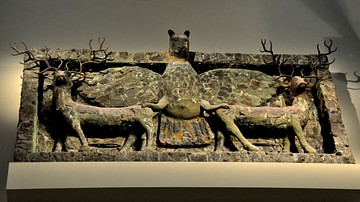
Image
Imdugud Copper Frieze from the Ninhursag Temple
Frieze from the base of the temple of the goddess Ninhursag at Tell Al-Ubaid. The lion-headed eagle monster, or Imdugud, grasps a pair of deer. Imdugud represents the Sumerian god Ningirsu, and it is unknown why it was placed at the temple...
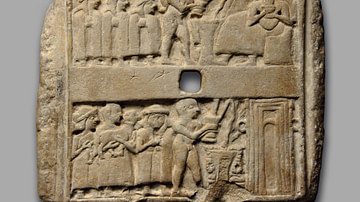
Image
A Sumerian Wall Plaque Showing Libation Scenes
The upper register shows a naked priest followed by three worshippers. The priest pours an unknown liquid offering from a spouted vessel into a stemmed dish or stand, in front of a horned god figure. In the lower register, there are three...
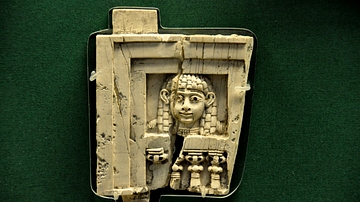
Image
Woman at the Window Ivory from Nimrud
A woman looking out of a balustraded window was a popular theme in Phoenician art. This is possibly related to the goddess Astarte and ritual prostitution. This piece belongs to a large collection of the so-called "Nimrud ivories." These...
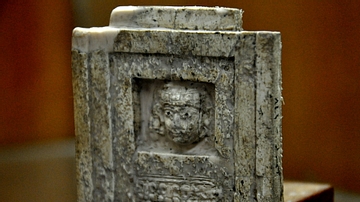
Image
Ivory Plaque of Woman at the Window
"Woman at the window" or "the lady of the window" is one of the most famous scenes in Phoenician ivory carving. The plaque shows a woman who looks out of a window, thought to be a sacred prostitute linked to the goddess Astarte or Ishtar...
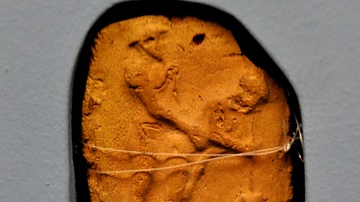
Image
Erotic Terracotta Plaque
This terracotta plaque dates back to the old Babylonian period. It depicts a male and female having sex while the woman drinks a fluid (beer?) from a jar through a straw. Such scenes were mass-produced in southern Mesopotamia during the old...

Image
Erotic Plaque
This terracotta plaque dates back to the old Babylonian period. It depicts a male and female having sex in a missionary position. Such scenes were mass-produced in southern Mesopotamia during the old Babylonian era. The precise idea behind...
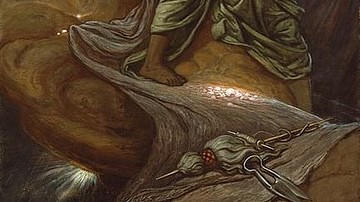
Image
The Fates Gathering in the Stars
The Fates Gathering in the Stars by Elihu Vedder, 1887 CE, now in the Art Institute of Chicago. This image depicts the three Greek Fates - Clotho, Lachesis, and Atropos - spinning the thread of life, then marking it's length and cutting...

Image
Hercules and the Hydra
Hercules and the Hydra, Antonio Pollaiuolo (1431-1498 CE). This painting, which represents one of the Twelve Labors of Hercules, is now in the Uffizi Gallery, Florence.
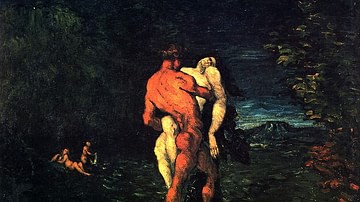
Image
The Abduction (Hercules and Alcestis)
An 1867 painting in oils, The Abduction by Paul Cézanne (1839-1906), the French post-impressionist artist. This painting is thought to depict Hercules rescuing Alcestis from the underworld (another theory is that this represents the abduction...
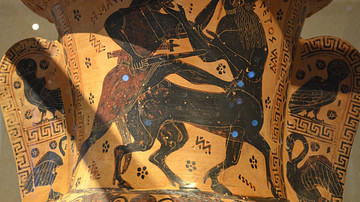
Image
Black-Figure Hercules & Nessos
Attic black-figure funerary amphora depicting Heracles wrestling down the Centaur Nessos, from a tomb in Athens, 620-610 BCE. (National Archaeological Museum of Athens)